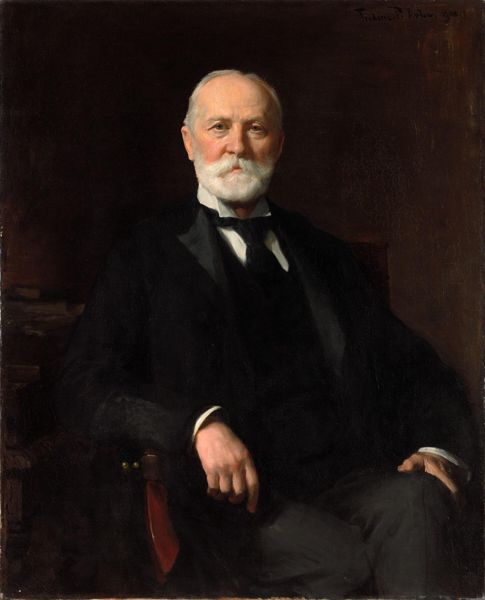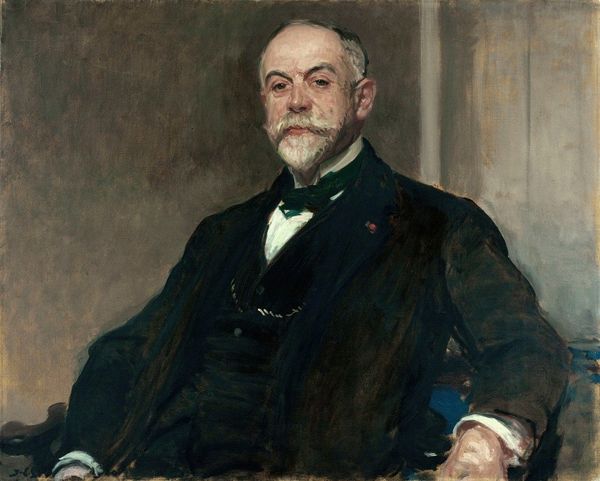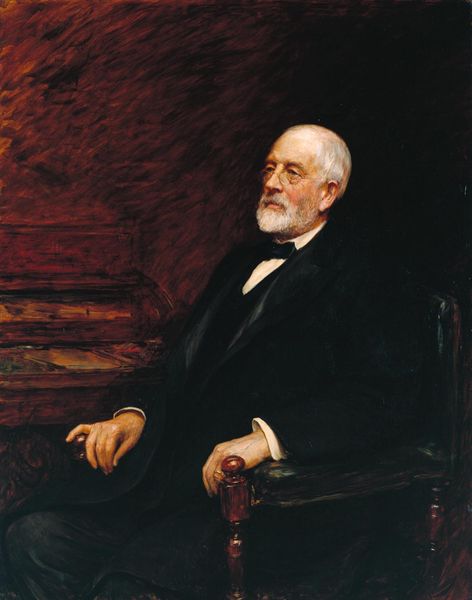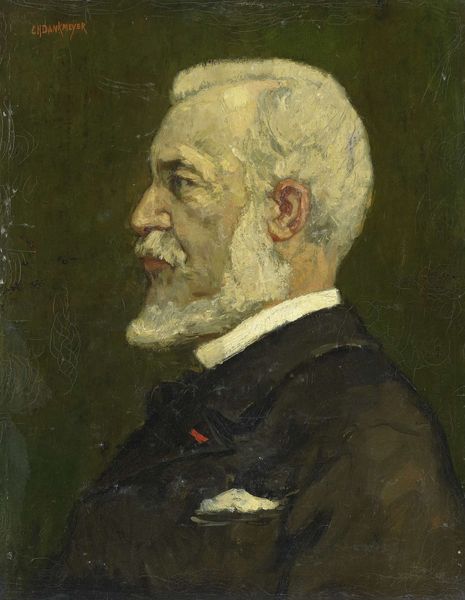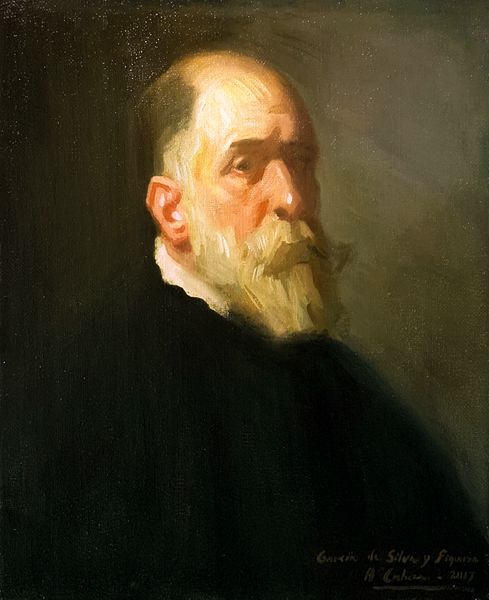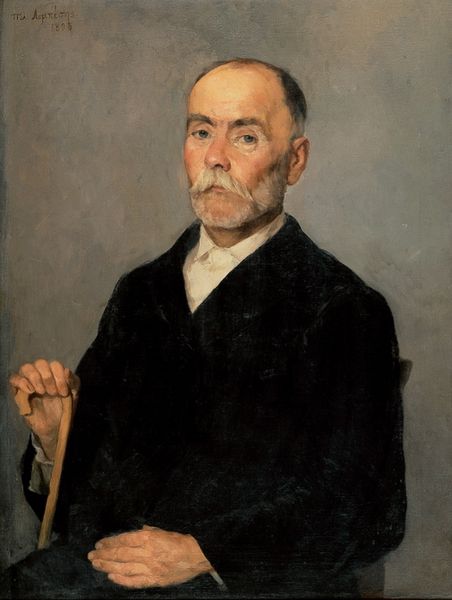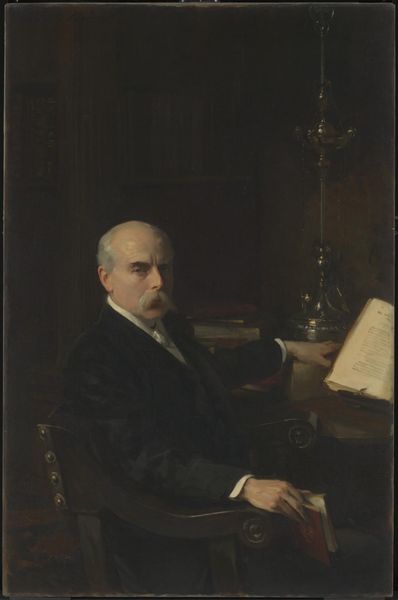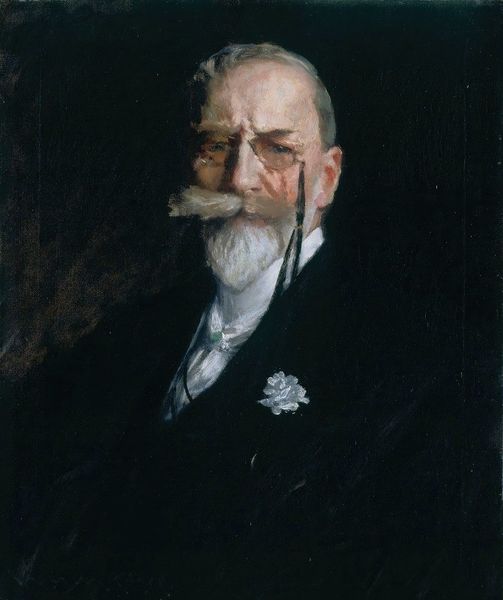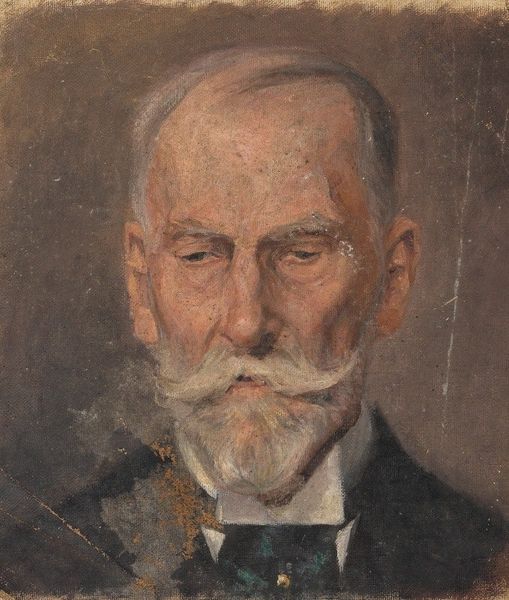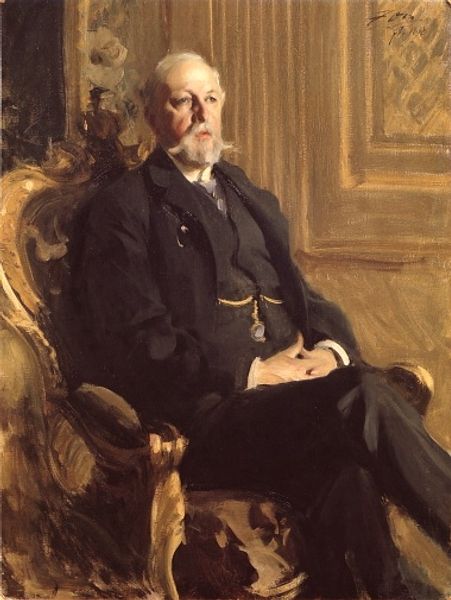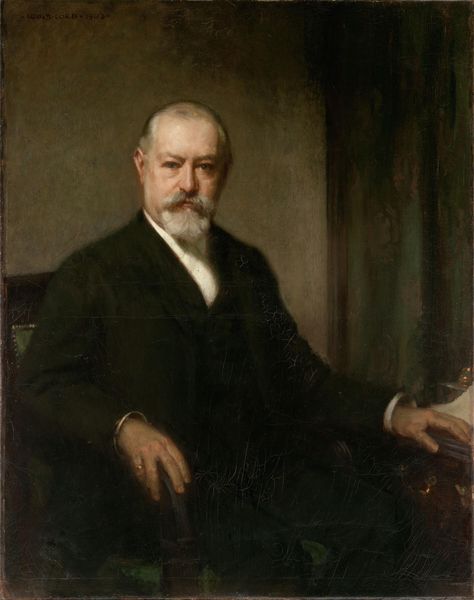
painting, oil-paint, impasto
#
portrait
#
painting
#
oil-paint
#
impasto
#
academic-art
#
modernism
#
realism
Copyright: Public domain
Editor: Here we have Joseph DeCamp's 1904 painting, "Benjamin Ames Kimball," done with oil paint, with what looks to me like heavy impasto. The colors are very subdued, and the overall impression is quite somber, dignified. How do you interpret this portrait? Curator: I see more than just dignity. Consider the date. 1904. The Gilded Age's opulence hid significant social inequality and political tensions. This portrait, with its dark palette and seemingly traditional composition, can be viewed through the lens of power and representation. Who was Kimball? Whose stories are told in portraiture, and whose are silenced? What does it mean to memorialize this man, in this style, at this time? Editor: I see your point. There’s a tension between the traditional style and the social context of the time. Do you think DeCamp was consciously making a statement about class or privilege? Curator: Perhaps. Or perhaps he was simply a product of his time, reinforcing existing hierarchies through his art. Regardless, viewing the painting critically compels us to confront uncomfortable questions about who gets remembered and how. Notice the detail in Kimball's hands, clasped together, almost protectively. What anxieties or power dynamics might be present in that gesture? What do you read there? Editor: Now that you point it out, I see a fragility I didn't notice at first. Maybe this is more complex than just a straightforward glorification of wealth and power. Curator: Exactly. And isn’t that what makes art history so exciting? To keep looking, keep questioning, and to acknowledge how power shapes what we see, and how we see it. Editor: Absolutely. Thanks to you, I'm definitely seeing a lot more in this painting now.
Comments
No comments
Be the first to comment and join the conversation on the ultimate creative platform.
